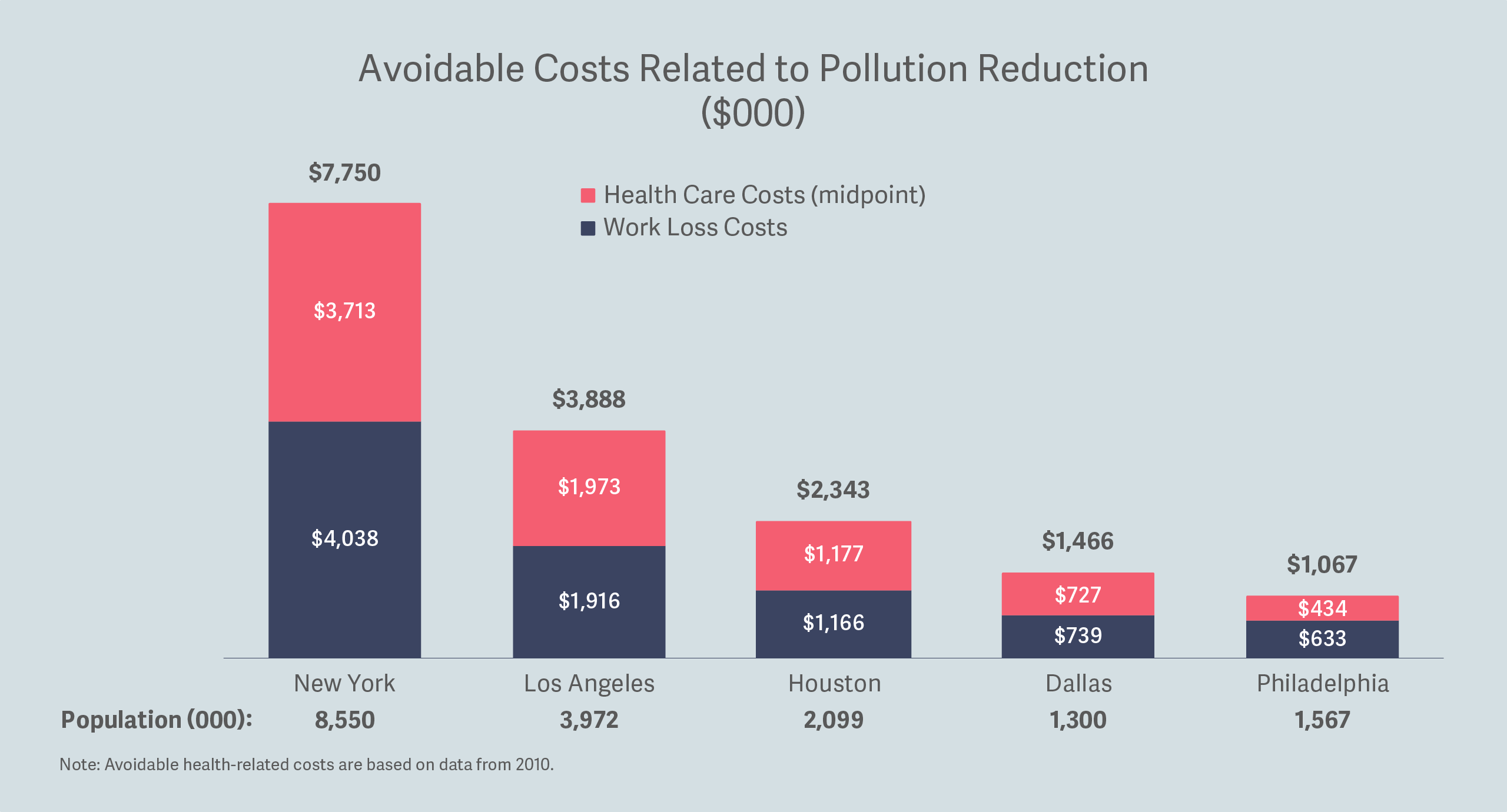-
Health-related Cost Impacts from Pollutant Reductions
In a white paper prepared with The Nature Conservancy (TNC) and the Trust for Public Land, an Analysis Group team led by affiliate Howard Birnbaum calculated the avoidable health-related costs associated with reduced levels of particulate matter (PM) pollution.
Atmospheric PM pollution is largely formed by emissions from power plants, industrial and construction sites, and automobiles. It is linked to a number of respiratory and cardiovascular conditions, such as asthma attacks and acute myocardial infarctions. These conditions can result in increased hospital and emergency room visits, which raise medical costs; and may also interfere with employee productivity, causing lost or restricted work days. Reducing PM pollution may have the added benefit of reducing these types of health-related costs for patients, employers, and insurers.
Trees serve as natural filters to lower PM pollution in urban settings. For TNC’s report, Analysis Group estimated the avoidable health-related costs from additional tree planting in 27 cities across the country. These savings amounted to substantial percentages of the tree planting and maintenance costs estimated by TNC for the different cities; Analysis Group's analysis indicates that 3-6% reductions in PM pollution could result in more than $1 million of avoided costs for each of the five most-affected cities. (See figure.) The avoided health care costs could be applied to help offset the costs of a city’s planting and maintenance program. Indeed, in some cities, the savings from reduced respiratory and cardiovascular conditions from additional tree plantings in the most effective city locations could offset 20% or more of the costs of the plantings.
Similarly, notes Dr. Birnbaum, avoided health care costs could be considered as part of other pollution-reduction programs. The offsets could benefit state and local governments, businesses, utilities, employers, and insurers alike. Analysis Group has extensive experience using large, complex external data sets and its own in-house health insurance claims databases to assess both direct and indirect cost impacts of many different health-related conditions.
By quantifying the link between pollution and health- and productivity-related costs, state and local governments, as well as federal agencies, that are looking for new sources of funding for pollution reduction programs may find an unlikely ally in health care companies and employers seeking innovative solutions for lowering these types of costs. ■

This feature was published in November 2017.

